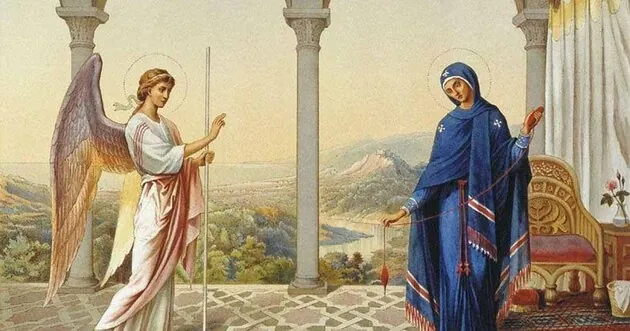Annunciation 2024: Holiday Significance and Observances
Celebrate Annunciation 2024: Discover the deep significance, traditions, and observances of this revered day.

Annunciation 2024: Exploring the Holiday's Significance and Traditional Observances
Introduction
The Annunciation to the Blessed Virgin Mary stands as a pivotal event in Christian tradition, particularly within the Eastern Orthodox Church. Traditionally observed on April 7, the celebration date has shifted to March 25 since the Ukrainian Orthodox Church adopted the Revised Julian calendar in September 2023. This article delves into the profound significance of the Annunciation, exploring its roots, traditions, and the dos and don'ts associated with this holy day.
The Significance of the Annunciation
At its core, the Annunciation represents the moment when the Archangel Gabriel appeared to the Virgin Mary, heralding the imminent birth of Jesus Christ. This "good news" is not only a cornerstone of Christian faith but also integrates into the cultural fabric, influencing numerous customs and beliefs that have been passed down through generations.
Historical Context
The term "Annunciation" itself, signifying "good news," was only coined in the 7th century. Prior to this, the event was referred to in various terms, such as "the Conception of Christ" and "the Announcement about Christ." This semantic evolution underscores the event's growing importance in Christian theology and popular devotion.
Observances and Prohibitions
The Annunciation, falling during Lent, is marked by specific observances and prohibitions. Engaging in physical labor or household tasks such as sewing, knitting, laundering, and embroidery is traditionally forbidden. Moreover, this day calls for abstaining from negative speech, harmful thoughts, and wishes towards others.
Despite the Lenten period's dietary restrictions, the Annunciation offers a reprieve, allowing the consumption of fish and seafood in recognition of the holiday's joyous nature.
Celebrating the Annunciation: Modern Traditions and Cultural Significance
While rooted in religious doctrine, the Annunciation has permeated folk culture, embodying a blend of spiritual reverence and communal traditions. This section explores how contemporary celebrations maintain the essence of this ancient feast, weaving together faith, culture, and community in commemoration of a divine revelation that continues to inspire and guide.
FAQs: Understanding the Annunciation
-
What is the Annunciation?
The Annunciation commemorates the visitation of the Archangel Gabriel to the Virgin Mary, announcing her role as the mother of Jesus Christ. -
How has the date of the Annunciation changed?
Previously celebrated on April 7, the Annunciation now takes place on March 25 for churches following the Revised Julian calendar. -
What are the traditional prohibitions of the Annunciation?
The day is marked by a pause in physical labor and household chores, along with a call to refrain from negative thoughts and actions. -
How does the Annunciation fit into the Lenten season?
Although Lent prescribes dietary restrictions, the Annunciation allows for the consumption of fish and seafood, reflecting the day's special status.
Conclusion: Embracing Tradition and Faith
The Annunciation to the Blessed Virgin Mary is more than a religious observance; it is a day that bridges the divine with the earthly, inviting believers and communities alike to reflect, rejoice, and renew their faith. By understanding its significance and traditions, we can appreciate the depth and breadth of this celebration, fostering a deeper connection to our spiritual heritage and cultural roots.
For more insights into Christian holidays and their contemporary relevance, visit Kiksee Magazine, your guide to spiritual enlightenment and cultural exploration.
Engage with the essence of the Annunciation and let its message of hope and renewal inspire your spiritual journey this 2024.
What's Your Reaction?






















